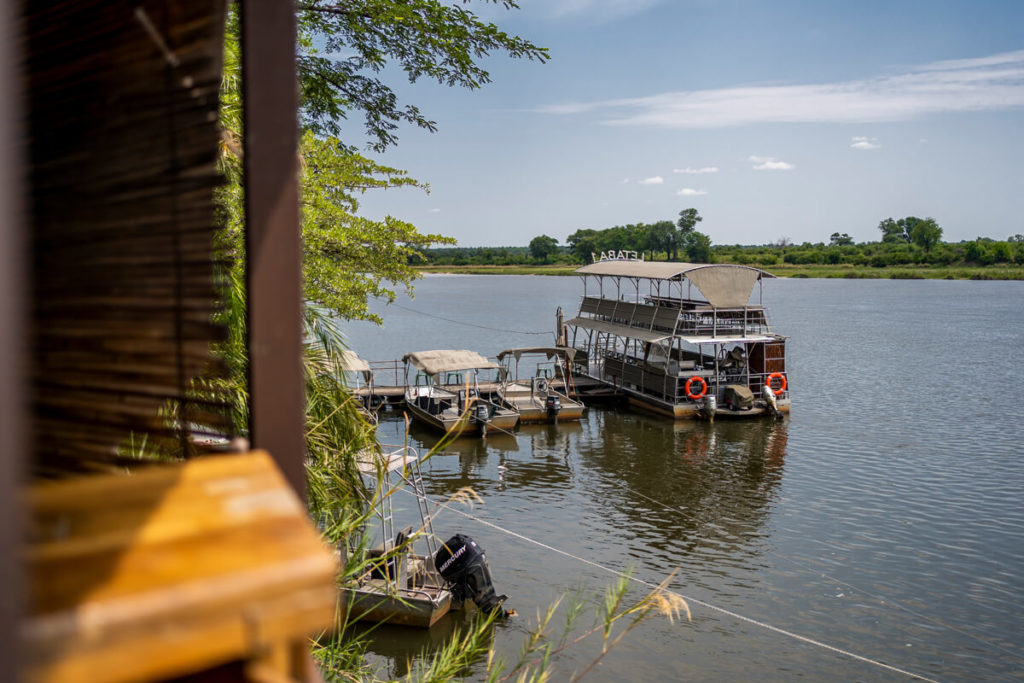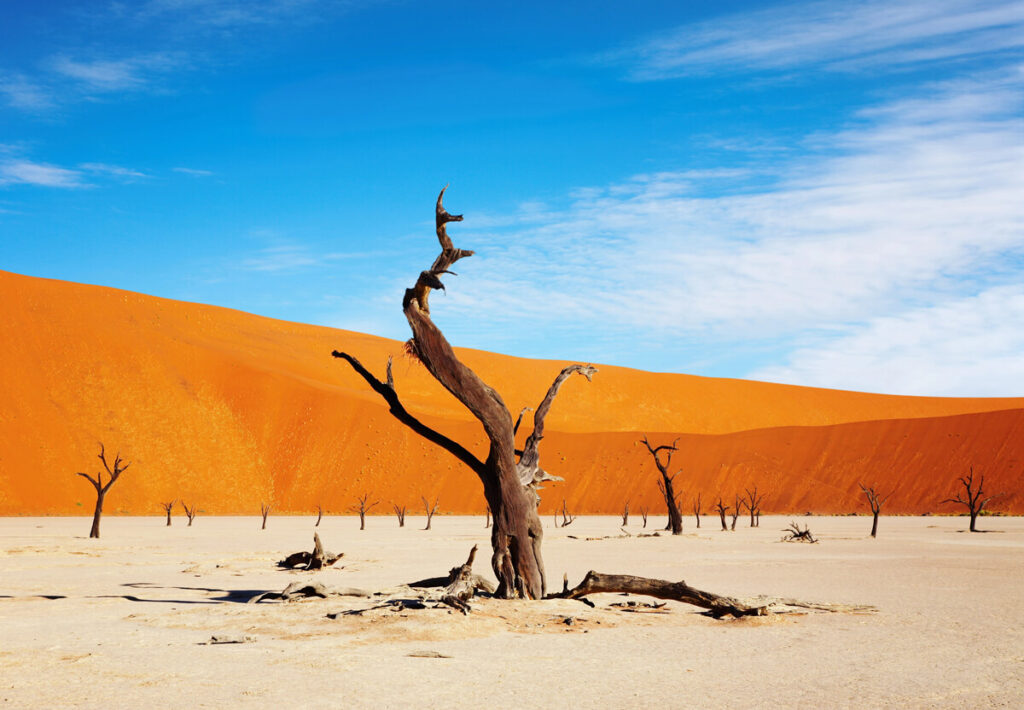Namibia is, for us, one of the most exciting countries in southern Africa. The best time to travel to Namibia plays an important role, as the country boasts endless desert landscapes, impressive wildlife viewing, and spectacular panoramas. If you’re looking for adventure, freedom, and unforgettable nature experiences, you’ll definitely find what you’re looking for in Namibia.
When planning your trip, the question quickly arises: When is the best time to travel to Namibia? The answer depends on several factors – including your interests, your budget, and which regions you want to visit.
In this article, we will answer the following questions, among others:
When is the best time to travel to Namibia to observe wildlife?
In which months is the Namib Desert most beautiful?
☀️ Which season is best for a road trip through Namibia?
When is the rainy or dry season in Namibia?
Which months are perfect for bird watching?
When is the peak season for traveling to Namibia?
❄️ How cold does it get at night during the dry season?
- Climate and Weather in Namibia
- Best Time to Travel to Namibia – The Regions
- Dry Season (May to October)
- Rainy Season (November to April)
- High season in Namibia (July to October)
- Namibia weather month by month (brief overview)
- The best time to travel depending on your interests
- Important holidays in Namibia
- FAQ: Frequently asked questions about the best time to travel to Namibia
- Conclusion: When is the best time to travel to Namibia?
Climate and weather in Namibia
Namibia has a dry desert climate with large temperature differences between day and night. While it can get quite hot in the interior during the day, temperatures often drop significantly at night. On the coast, the cold Benguela Current ensures a milder, often foggy, and pleasantly cool climate. Basically, the year in Namibia is divided into two clear seasons: the dry season from May to October and the rainy season from November to April.
Especially if you’re planning a safari, a road trip through the country, or want to experience the impressive landscapes, you should definitely keep the climate in mind. During the dry season, the chances of unforgettable wildlife sightings are particularly good, the roads are largely passable, and the weather is pleasantly stable.
During the rainy season, on the other hand, Namibia shows its green side – spectacularly beautiful, but also with challenges such as short, heavy rain showers and difficult road conditions. The best time to travel depends entirely on what you want to experience on your trip.
Important information at a glance:
- Inland: hot and dry, cold at night
- Coast: cooler, often foggy
- Dry season: May to October
- Rainy season: November to April
Best time to travel to Namibia – The regions
In the following table, you will find the most important regions of Namibia and the best time to travel to each of them. Of course, that doesn’t mean you can’t have a great time outside of these months. Quite the opposite: Especially outside of the classic high season, Namibia has its own unique charm.
Dry season (May to October)
The dry season is considered the best time to travel to Namibia – and rightly so. Between May and October, you can expect pleasantly warm temperatures between 23°C and 27°C, hardly any rain, and around ten hours of sunshine per day. Perfect conditions for safaris and road trips.
Particularly practical: During the dry season, vegetation is low, visibility is excellent, and many wild animals congregate at the few watering holes. Whether in Etosha National Park or Damaraland – now you have the best chance of unforgettable animal encounters.
What you should know:
- Best conditions for safari and animal observation
- Hardly any rain, perfect visibility
- Pleasantly warm during the day, sometimes frosty at night
- High season: July to October (more tourists, higher prices)

Rainy season (November to April)
During the rainy season, Namibia reveals a completely different side: the landscape turns green, flowers bloom, and many animals give birth. At the same time, November marks the beginning of the Namibian summer, which lasts until the end of March. From December to February, it gets particularly hot in the interior – temperatures often climb well above 30°C – and short, heavy thunderstorms can occur in the afternoon.
This makes the rainy season a bit challenging for safaris and outdoor adventures. Some roads are difficult to navigate, and the dense vegetation makes it harder to spot animals. In return, there are fewer tourists, accommodation prices fall, and you experience Namibia’s lush, green side.
On the Atlantic coast, the weather is completely different: places like Swakopmund or Walvis Bay offer a pleasantly cool climate, perfect for relaxing or for activities by the sea.
What you should plan for:
- Green nature and lots of baby animals
- Lower prices, fewer tourists
- Hot, humid climate
- Road conditions can be difficult at times
High season in Namibia (July to October)
The high season in Namibia falls during the dry season, i.e., the months July to October. During this time, conditions are ideal for safaris, road trips, and outdoor adventures: It hardly rains, temperatures are pleasant, and wildlife sightings are particularly good because many animals gather at the watering holes. Popular areas like Etosha National Park, the Namib Desert, or around Swakopmund can get particularly crowded.
Our tip for the high season in Namibia: If you plan to travel between July and October, it’s best to book accommodations and rental cars early. Many popular lodges and campsites are booked out weeks and months in advance. Also, plan enough time – especially in high season, it’s worth experiencing individual places more intensively instead of traveling too quickly through the country.
Namibia Weather Month by Month (Short Overview)
Here you’ll get a quick overview of what weather to expect in each month:
The Best Time to Travel Depending on Your Interests
Depending on what you want to experience in Namibia, different times are best:
Safari and Wildlife Watching: You have the best chances during the dry season from July to October, when the animals gather at the watering holes.
Whale Season: Between July and November, you can observe large marine mammals such as humpback whales and southern right whales on Namibia’s coast.
️ Desert & Experience Sossusvlei: From May to September it’s not too hot and perfect for desert tours.
Road trip through Namibia: Road trips are possible year-round, but during the rainy season, the unpaved roads can be tricky.
Birdwatching: If you love birds, the rainy season (December to March) is ideal – that’s when many migratory birds are on the move.
Discover the coast (Swakopmund, Walvis Bay): It’s pleasantly cool here all year round. The weather is particularly good for traveling between May and September.

Important holidays in Namibia
Especially around holidays, accommodations may be fully booked more quickly or government offices, shops, and markets may be closed. Here are the most important holidays in Namibia that you should keep in mind:
FAQ: Frequently asked questions about the best time to travel to Namibia
→ July to October – dry season = best animal viewing.
→ Yes, but you have to expect heat, rain, and sometimes impassable roads.
→ Especially in June and July, temperatures can drop to 0°C at night.
→ You should avoid the region around the Caprivi Strip between December and March.
→ You’ll see the most animals in Namibia during the dry season, especially between July and October.
Conclusion: When is the best time to travel to Namibia?
If you want to see animals, plan safaris, or are looking for the perfect road trip backdrop, the dry season between May and October is ideal. Do you like green landscapes, few people, and cheaper prices? Then the beginning and end of the rainy season are also worth it.
The transitional months of April/May and October/November are ideal for a tour of Namibia. At this time, Namibia is still relaxed. The national parks are pleasantly empty, and you can often spontaneously visit campsites without worrying about them being fully booked. We are generally big fans of the “off-season.”
The high season from July to October is perfect for those who don’t cope well with extreme heat. During the day, temperatures are pleasantly warm, but at night it can get really cold – sometimes even frosty. If you want to travel to Namibia during this time, you should definitely book your accommodations, campsites, and rental car in advance. Popular spots like Etosha National Park are often fully booked months in advance.
Of course, you can also travel to Namibia during the rainy season. From December to March, however, it gets really hot, and short, heavy rain showers are not uncommon. You’ll need some flexibility for safaris and road trips, as some roads can be difficult to navigate. There’s also plenty of water everywhere, so the animals are spread out and harder to spot.
- Cover photo: Namib Desert by fbxx | depositphotos.com
- Namib Desert by muha04 | depositphotos.com